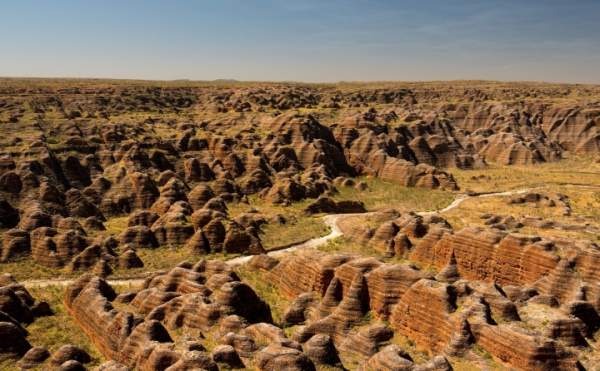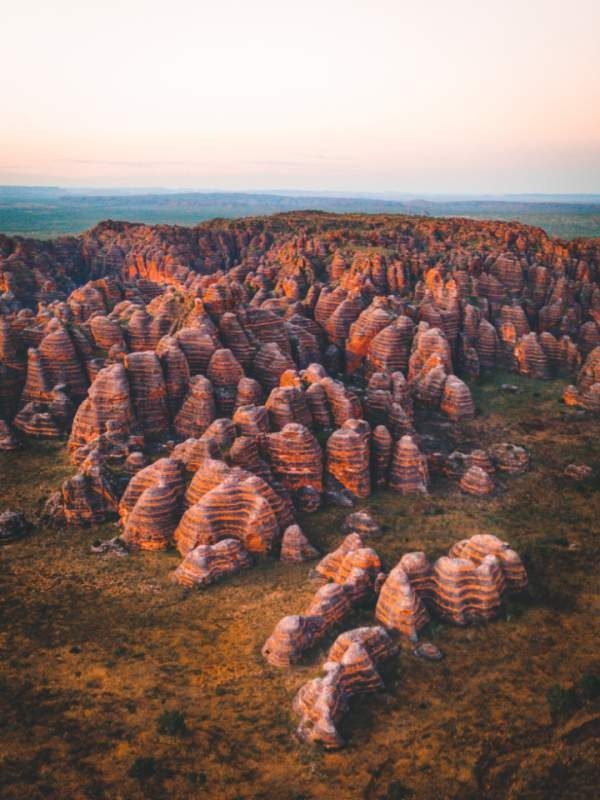Purnululu, which means “sandstone“, has long been inhabited by local Aboriginal people, but was unknown to the rest of the world until the mid-1980s.

The “giant beehives” that exist for millions of years are unique on the planet
In the Kimberley region of Western Australia is Purnululu National Park. This is home to the outstanding Bungle Bungle range with sandstones of many spectacular shapes.
The most popular area of Purnululu park is the Bungle Bungle range.

Twenty million years of weathering have produced the eroded sandstone towers of the Bungle Bungle Range.
Rising 300 meters above the grass-covered plains, the orange and black sandstone domes are among the world’s most fascinating geological landmarks. Many people liken this maze of domes to giant beehives.
Like giant beehives, these unique sandstone mountains vary in height.

Thousands of huge orange and black striped domes make up the impressively breathtaking landscape of the Bungle Bungle range.
The rock formations were created over a period of 20 million years as water gradually eroded the karst sandstone, creating the beautiful shapes we see today.
The paths in the park take visitors through a maze of narrow canals, isolated valleys, and majestic caves. Purnululu National Park is also home to 130 species of birds, as well as unique native animals.

Hidden within this fascinating landmark are deep gorges, narrow abysses, palm trees, seasonal waterfalls.
Although it has been around for 350 million years and has been tended by Indigenous Australians for more than 40,000 years, it was not until 1983 that the area became known to the public after aerial treasure seekers fell in love with it. flag discovered while making a documentary.
Visitor sites in Purnululu National Park are located at the north and south ends.

Each direction of the park has a series of well-signed walking trails and attractions.
With a unique geological and Aboriginal significance, Purnululu was listed as a World Heritage Area in 2003.
UNESCO has described Bungle Bungles as “unparalleled in their scale, magnitude, grandeur and variety of forms anywhere in the world”. The site’s honeycomb shape is visually appealing while their natural stripes add a uniqueness like nowhere else on the planet.

